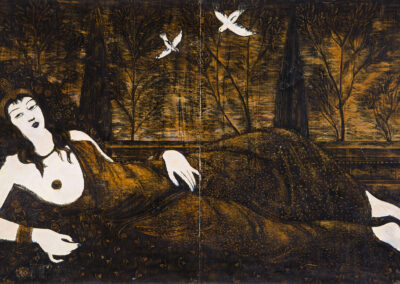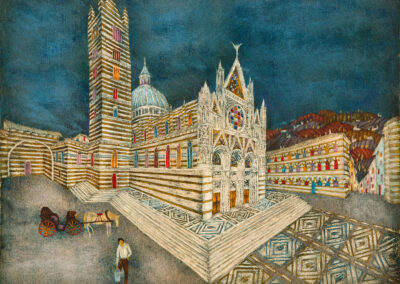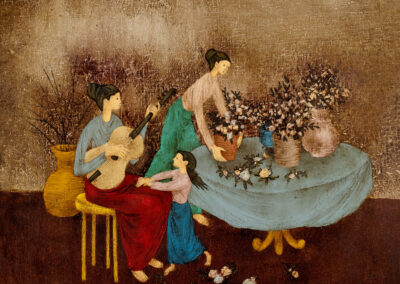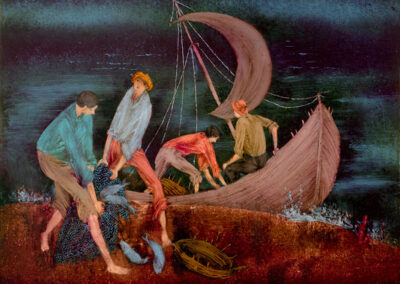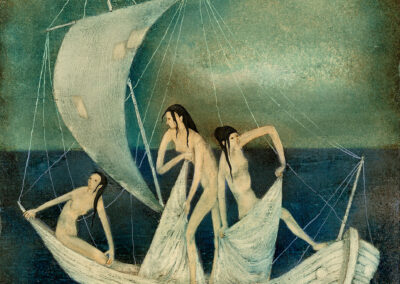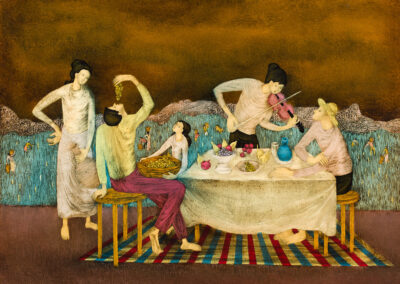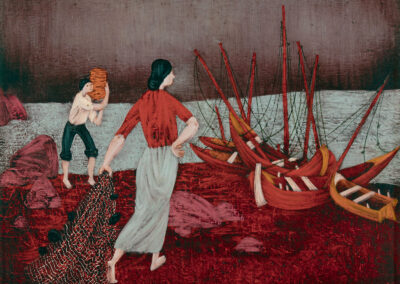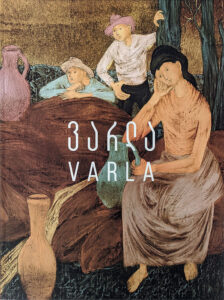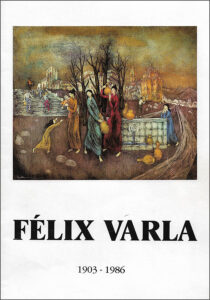Felix Varlamishvili
Images
Info
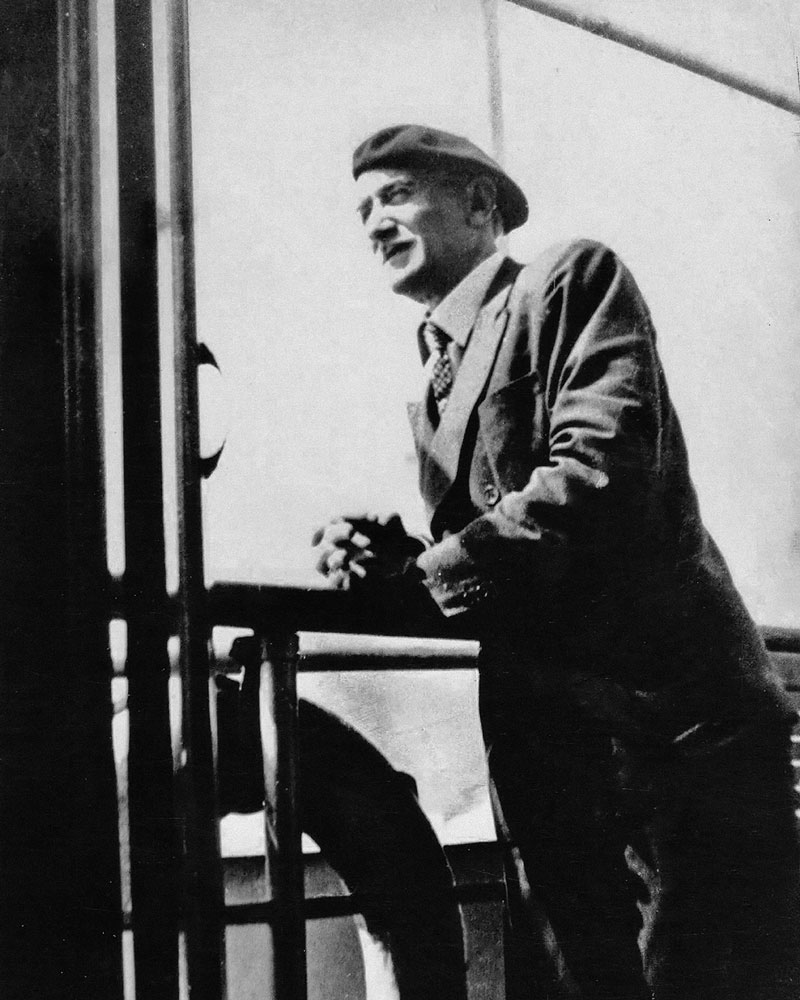
“I painted all my works with love for Georgia, and on that foundation I created my own artistic style.”
Felix Varlamishvili (1903–1986)
Felix Varlamishvili was a representative figure of Georgian émigré culture. He was born in Kutaisi on April 22, 1903. In 1920, he enrolled at the Faculty of Natural Sciences of Tbilisi State University, and from 1922 to 1926, he studied at the Faculty of Painting at the Tbilisi State Academy of Arts. In 1928, he left for Paris, later settled in Argentina, and returned to Paris again in 1952. He passed away on February 6, 1986. In 1987, in accordance with the artist’s will, his wife, Zire Binder, donated ten of his paintings to the Georgian State Museum of Fine Arts.
The artistic legacy of Felix Varlamishvili is deeply rooted in two cultural worlds. Though Georgian by origin, he spent much of his life in Paris. Consequently, his art, like Georgian painting itself, embodies a synthesis of both Western and Eastern cultural elements. Through his masterful use of color, the artist achieved effects reminiscent of precious stones’ brilliance. Within a symbolic, icon-like space that evokes an illusion of eternity, unfold “stories” from everyday life: scenes of labor, harvest, hunting, fishing, leisure, family idylls, and festivities. Yet, these mundane moments are rendered with such reverence that they evoke the atmosphere of ritual or mystical action.
His central theme is the celebration of life within the ordinary, where the mystery of existence is conveyed through the simplicity of daily experience. At times, he also turned to mythological, religious, and historical subjects. In his creative work, Felix Varlamishvili elevates every subject toward the supra-real, sometimes even into the realm of the fantastical.
Scenes of human life and relationships in his works are illuminated by the radiance of beauty, grace, and eternity. He achieves this through harmonious, refined interpretations of themes, delicate color schemes, and the stylization of form. Motifs often recur, reinterpreted in varying compositional and chromatic arrangements. Figures in his paintings lose all sense of materiality; much like the masters of the Middle Ages, the artist depicts the human body as a “vessel” for the soul, a precious “container.” His works reveal the influence of Gothic sculpture and icon painting, while simultaneously introducing a modernist interpretation of form, in which the human figure is transformed by emotional vibration and expressed through stylized, linear linearity reduced to an abstracted figurative scheme.
In Varlas artistic oeuvre, Georgian and European themes, along with elements from various cultures, are harmoniously intertwined. His use of color radiates with the brilliance of Byzantine mosaics and medieval Georgian enamels. The scenes are at times constructed upon the principles of the icon, following the compositional schemes of religious art; at other times, the stylistic features of Eastern miniature painting are boldly and intriguingly fused with the configurations of Western art. The theatrical presentation of his subjects, the choreographic grace and elegance of his figures, the world poised on the boundary between the real and the surreal, the distant image and allure of his homeland, the luminous texture, and the unique artistic manner of expressing beauty, all these render Varla’s work part of the humanist tradition. His art embodies a poetic argument for the harmonious coexistence of humanity and the universe.
Baia Tsikoridze
Solo Exhibitions: Galleria Speranza, Paris, France (1933); Galerie Roux-Hentschel, Paris, France (1933, 1947); Viaus Gallery, Buenos Aires, Argentina (1951); Drouot Gallery, Paris, France (1952, 1958, 1959); Forum Gallery, Monte Carlo, Monaco (1959); Galaxy Gallery, Detroit, USA (1963); Takashimaya Gallery, Kyoto, Japan (1970); Simon Van Dormael Gallery, Brussels, Belgium (1977); State Museum of Fine Arts of Georgia, Tbilisi, Georgia (1986); David Kakabadze Art Gallery, Kutaisi, Georgia (1987); Vernissage Gallery, Tbilisi, Georgia (2009); National Gallery, Chardin Gallery, Tbilisi, Georgia (2019); Chardin Gallery, Tbilisi, Georgia (2020, 2021); “Beyond the Homeland” (Georgian Artists in France: Felix Varla, Vera Pagava, Vano Enukidze, Mikheil Bilanishvili), National Gallery, Chardin Gallery, Tbilisi, Georgia (2023, 2024); “Return”, Georgian Museum of Fine Art, Tbilisi, Georgia (2025); Alexander Chavchavadze House Museum, Baia Gallery, Tsinandali, Georgia (2025).

